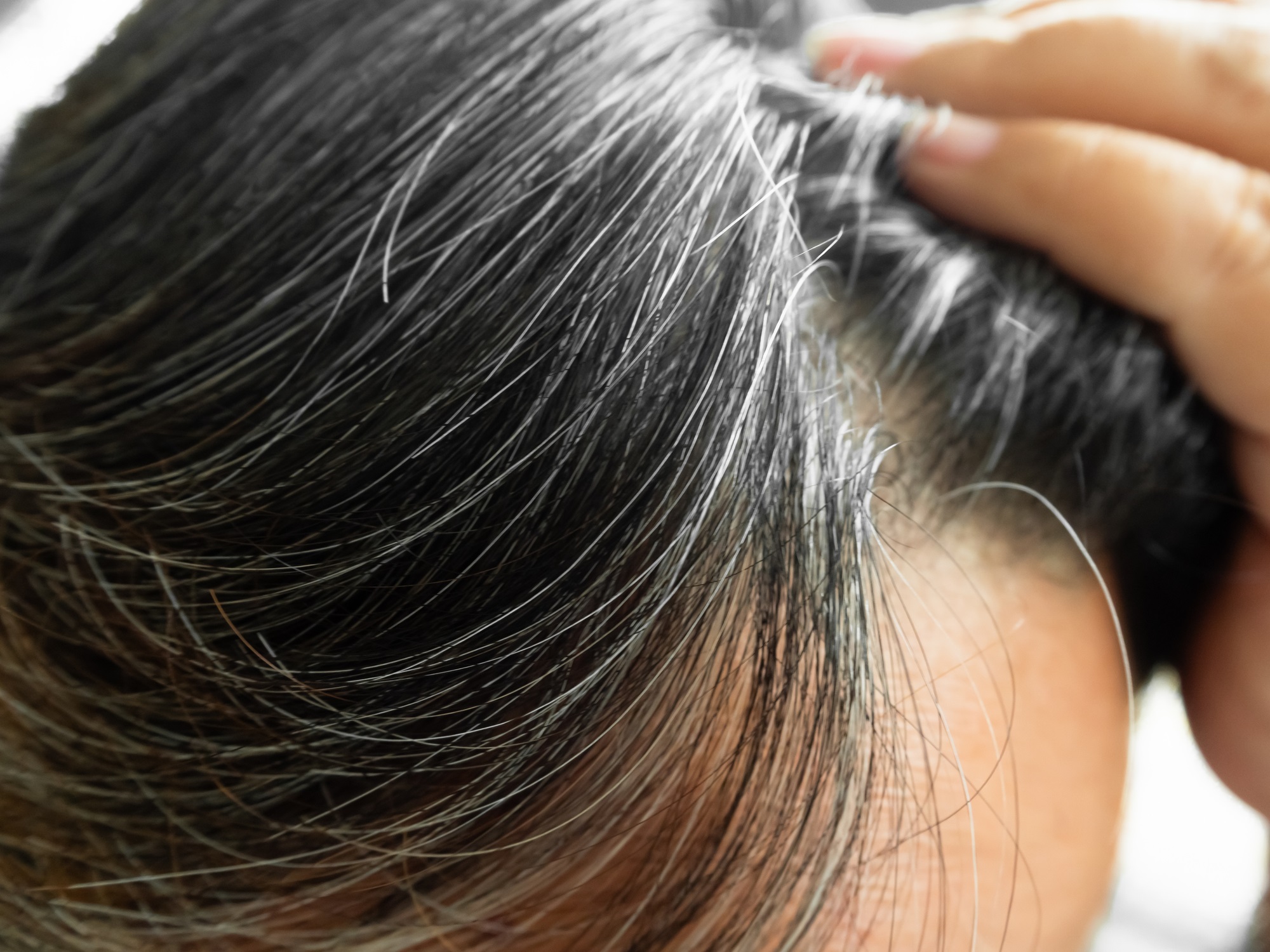
Arey, a leading brand in functional beauty, is reportedly the first and only company to conduct such a study specifically focused on reducing the appearance of grey hair.
We spoke to Jay Small, co-founder of Arey and a trichologist, who provided his insights into the motivation behind the study and its broader implications for the hair care market, including the growing consumer demand for clinically validated solutions in hair and scalp health.
A new milestone in grey hair care
The study, involving 173 participants aged 28 to 65, was conducted over six months. Participants who had less than 25% grey hair at the start, were evaluated at baseline, 12, and 24 weeks.
The results showed that 88% of participants using Arey’s “The System” saw reduced grey hair growth, while 50% experienced no new grey hairs. Notably, 38% of participants even reported repigmentation, a key result for those aiming to reverse the effects of grey hair.
Small explained the significance of this research for the cosmetics industry, sharing that Arey is “the first to create a clinical study of this scale focused on the appearance of grey hair, and our results show a statistically significant reduction in grey hair growth.” Further, he added, “these findings challenge what’s been traditionally considered possible in hair care, opening the door for other manufacturers to explore scientifically backed solutions for hair pigmentation.”
Study impact on industry manufacturers and suppliers
For personal care product manufacturers, this breakthrough is a noteworthy development in a competitive and increasingly sophisticated market. Consumers are no longer satisfied with superficial hair treatments; they are demanding products that offer tangible, scientifically proven results.
The success of Arey’s study, conducted with the same rigor as medical research, underscores a growing trend: the intersection of science and beauty is becoming non-negotiable for brands aiming to lead in the market.
Small highlighted that Arey’s success is rooted in efficacy. “At Arey, product efficacy is our number one priority,” he noted. “Nearly everyone will experience greying hair in their lifetime, and we wanted to determine the most effective solutions to maintain our leadership in this category.”
Arey’s results demonstrate that targeted hair care products can meet consumer expectations not only for aesthetic improvement but also for preventative care, a shift in the industry’s approach to aging hair.
With the growing focus on anti-aging solutions in the skin care market, the leap to hair care is a natural progression, and the term coined by co-founder Allison Conrad, “The Wrinkle Cream of Haircare,” captures this concept.
The Mela-9 Complex: A science-backed formula
Arey’s proprietary Mela-9 Complex is at the heart of their clinical success. Formulated with antioxidants, peptides, and naturally derived extracts, said Small, the Complex is designed to reduce oxidative stress in the hair follicle—one of the leading causes of grey hair. Palmitoyl Tetrapeptide-20 Amide, a key ingredient in the complex, upregulates melanogenesis, the process through which pigment cells are produced and incorporated into hair strands.
“The Mela-9 Complex balances free radicals that develop due to oxidative stress in the hair follicle,” Small explained. “Once the formula reaches the hair follicle, the peptide works to boost pigment production,” and “this technology supports overall hair health in addition to preventing grey hair.”
Manufacturers in the hair care space can see Arey’s use of peptides and antioxidants as a signal of the direction the industry is heading. Increasingly, consumers expect multi-functional products that address both aesthetic concerns, such as pigmentation, and overall hair health, like thickness, shine, and volume.
The growing interest in holistic hair care parallels trends seen in skin care, where consumers have come to expect products that deliver both immediate results and long-term health benefits.
Shifting consumer expectations
The results of Arey’s clinical trial point to a significant shift in consumer expectations for hair care products. With 88% of participants experiencing reduced grey hair growth, consumers are likely to expect similar levels of efficacy from future grey hair solutions. Additionally, the study found that those who did not use “The System” saw an 8% increase in grey hair growth, further emphasizing the demand for products that can deliver real, measurable results.
“While we are confident in our products’ efficacy, we also know that results can vary due to individual factors such as diet, lifestyle, and genetics,” Small noted. “But with the likelihood of success being very high, consumers can feel confident that they will see their hair health improve.”
For manufacturers, the key takeaway is that consumers are looking for transparency and scientifically backed claims. The days of vague promises in personal care products are dwindling, and Arey’s research is a clear example of how brands can earn consumer trust through clinical validation.
Future directions in hair care innovation
As Arey continues to push boundaries in hair care, the brand plans to expand its research and explore new ingredients to further improve hair longevity and health. “Offering proactive solutions will continue to be our focus,” said Small. “We are excited to conduct additional studies, research new ingredients, and create products that support our customers’ needs.”
For cosmetics and personal care manufacturers, Arey’s breakthrough represents a call to action. Brands that invest in research and development, with a focus on clinical efficacy, stand to benefit from the growing demand for products that deliver both beauty and health benefits. With consumers expecting more from their hair care products, the future of the industry lies in innovation, and Arey’s success is an example of what’s possible when science meets beauty.

